- Salt Pork vs Pork Belly: Which Is Better? - September 1, 2021
- Ham vs Pork Explained: The Ultimate Guide - August 28, 2021
- Russian Sausage Guide and History: Best Types and Recipes - August 25, 2021
Russian sausages hold a special place in the hearts of the country, and their popularity can partly be blamed on the two world wars Russia took part in. The Russians borrowed meat preservation and curing methods from nations all around the world, but gave the sausages their own unique flavor and identity. Now, Russian Sausages have their own identity, flavor, and unique look.
History of Russian Sausages
Sausages for the Aristocracy
Before Russia suffered major food shortages in the 20th century, sausages and cured meats were only a thing reserved for the rich. Sausages were only made from the best meats and the highest quality spices until the food shortages emerged and they became popularized.
How Wars Popularized Sausages
Russia suffered a great deal in the two world wars it fought, and the result was cattle shortages and a severe lack of infrastructure throughout the country. Refrigeration wasn’t something available to the average person until the mid-1960s, and when livestock was in short supply people started depending more on preserving meat in other ways.
Cured, smoked, dried, boiled, and other sausages of all kinds began to be sold all over the country, and sausages became a common part of anyone’s pantry.
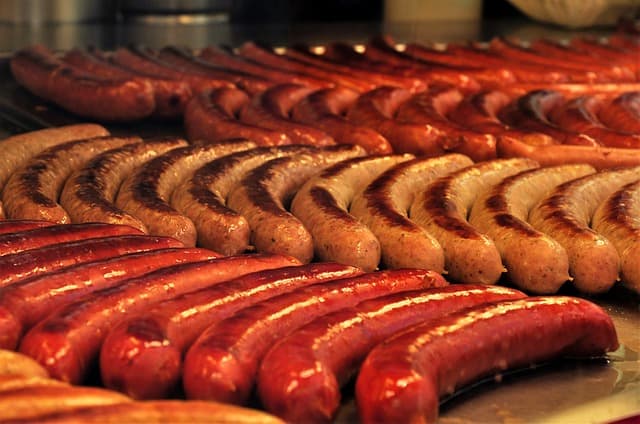
The Sausage Shortage
Eventually, Russia started running low on both high-quality meat and meat processing plants and technology. This led to sausages rarely being found in the country, and even then only in the bigger cities. Many factories started adding low-quality components and fillers to the sausages, and even then people would have to line up for more than an hour to get the sausages.
Even if the sausages remained popular after the alterations in their recipe and cheap fillers like bone dust and starch being added to them, several jokes were made about them and the recipe for the sausages was never really publicized.
Because of the food shortages and the overall state of the country though, Russians would travel from all over the country to cities where the sausages were being sold.
Today, these sausages are once again freely available in and around Russia.
Cultural Significance
Sausages became a big deal in Russia as soon as they were introduced. Once the Societ Republic was established, the government wanted to show the world that Russia was going to be alright, and part of those initiatives included boosting the country’s meat production. Stalin appointed a man named Anastas Mikoyan in charge of the food industry, and after being deeply impressed by the Americans and their sausage production, he embarked on an aggressive ad campaign to weave sausages into the fabric of the nation.
Sausages were soon being sold everywhere, and everyone was having them for breakfast with buttered bread – the go-to way for people to eat sausages even today. Recipes that called for Kielbasa were added to the Book About Tasty and Healthy Food, which was the first national cookbook.
They even planned to get famous writers to write novels about sausages!
Refrigeration wasn’t something that Russians had access to until the 1970s, and sausages were the primary way to store meat. They were a regular part of more people’s pantries and were sometimes hanging from lines outside people’s homes.
The recipe for sausages was changed in the 1970s too, amid serious meat shortages. People traveled from all over the country to big cities that still sold Kielbasa, and they became the butt of quite a few jokes.
Cheap Kielbasa that contained a lot of fillers along with the meat began to be called sobachya radost, which means a dog’s paradise. When people flocked to Moscow on trains to buy food that they couldn’t find elsewhere, jokes like “what’s long and green and smells like Kielbasa?” became pretty popular – the trains in Russia were green.
Russian Sausages – The Basics
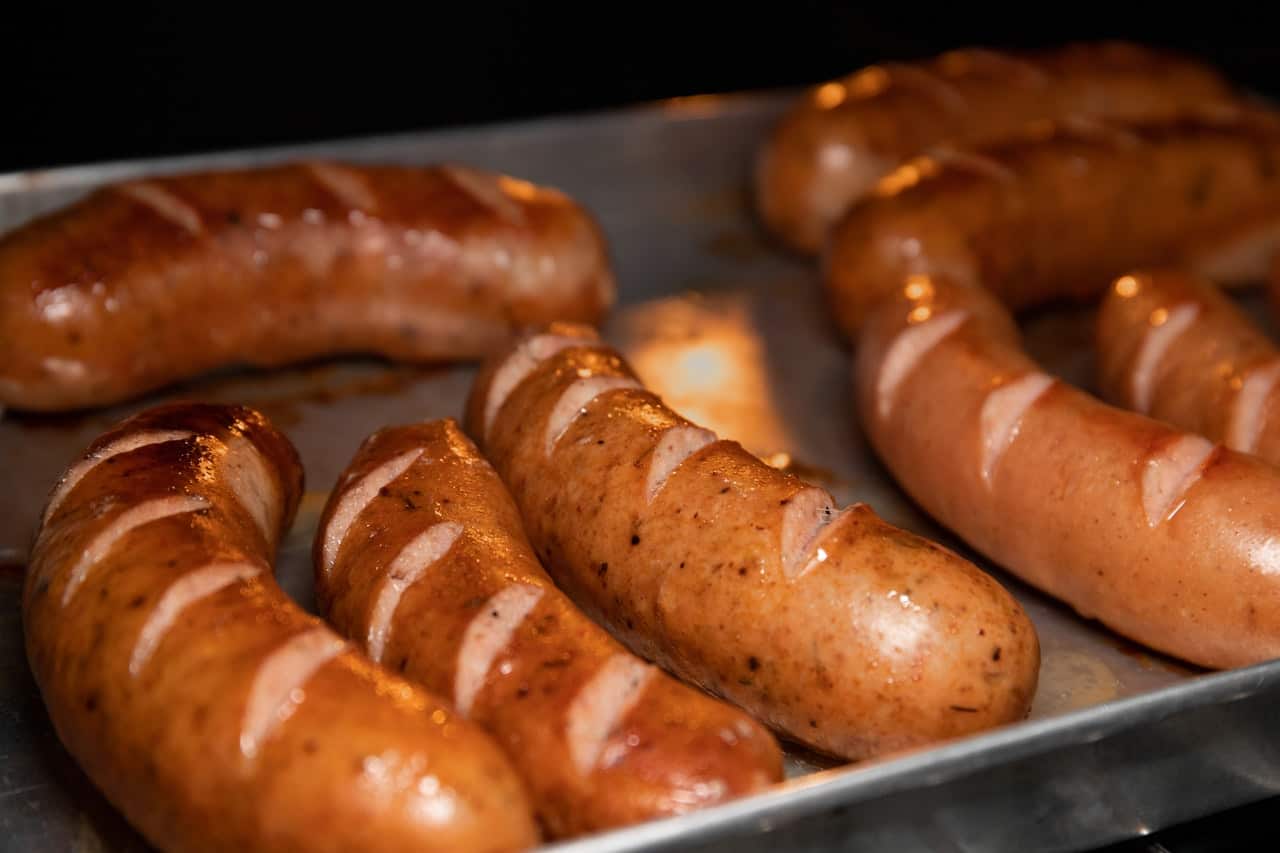
The Russian word for sausages is Kielbasa. While they were originally based on sausage recipes from all over the world, tastes and preparation methods kept evolving until eventually the Kielbasa was considered a different kind of sausage all on its own.
There are various kinds of Kielbasa, and all are prepared differently.
- Varyonaya or Doctor’s Sausage
- Syrokopchyonaya or Salami
- Varyono-kopchyanaya or Boiled and Smoked Kielbasa
- Domashnaya or House Kielbasa
Traditional Kielbasa recipes included a combination of pork and beef meat, fat, and sometimes blood stuffed into animal intestines, but today many Kielbasa varieties sold in grocery stores use synthetic casings.
Types of Kielbasa
I just listed all the different types of Kielbasa, but let’s talk more about each.
Varyonaya or Doctor’s Sausage
Boiled Kielbasa – or Doctor’s sausage, as it’s more popularly known, is a boiled variety of Kielbasa that’s grey and round. It has a shelf life of about a week.
From the 1930s to the 1970s, Kielbasa was made from only the best ingredients and was almost 99% meat. The goal of its production was to provide Russians with high-quality food that was easily accessible, but then the country hit a rough patch in the 1970s and the recipe for Kielbasa was changed.
Fillers like starch and bone dust were added, and the new recipe wasn’t nearly as popular as the old one.
Syrokopchyonaya – Salami or Bologna Type Kielbasa
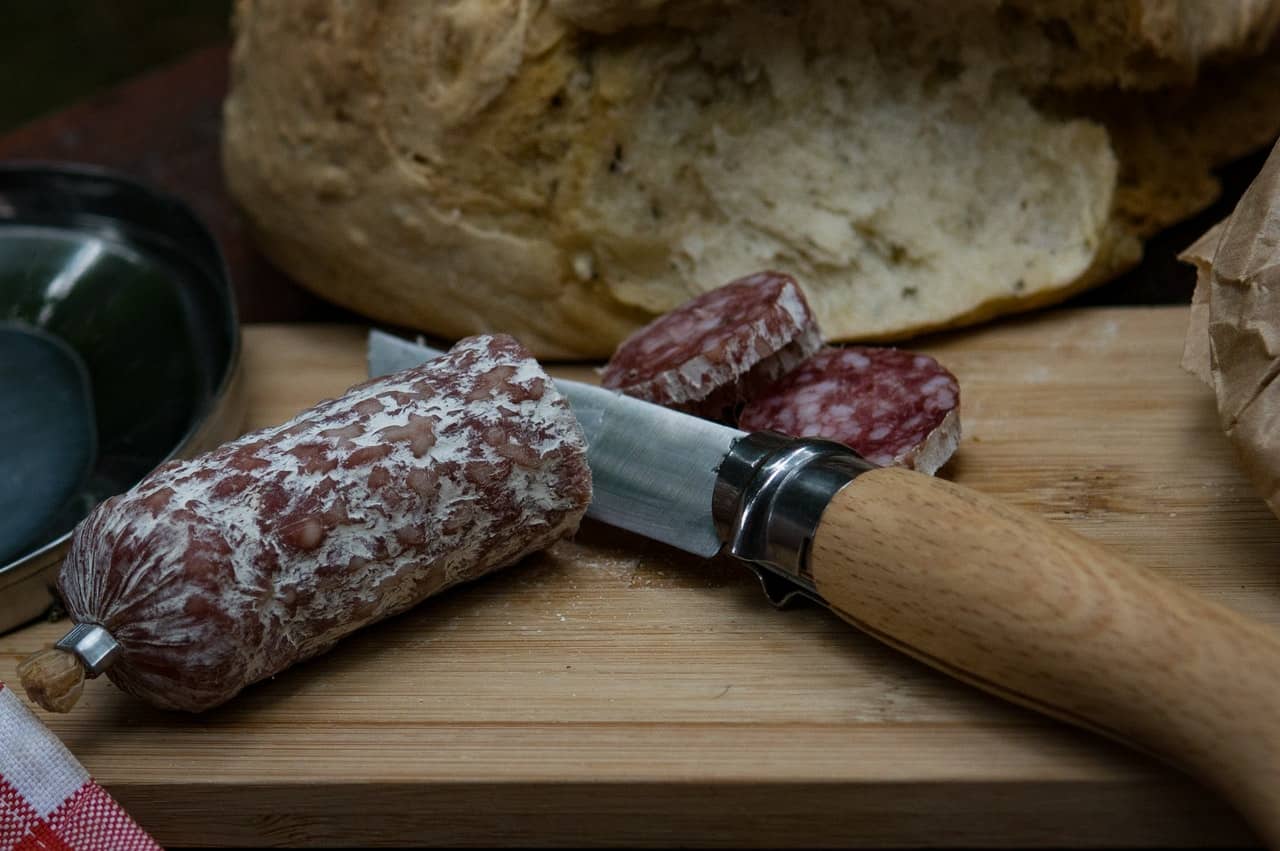
This type of sausage was one of the first ones to be manufactured in Russia, and the idea came to them by watching the Americans do it. Sandwiches with Kielbasa slices and buttered bread were fairly common during the time, and this sausage is usually a smoked variety.
Varyono-kopchyanaya or Boiled and Smoked Kielbasa
This variety of Kielbasa is usually served cold. As is evident from the name, it’s both boiled and smoked, and the meat mixture used for its preparation contains milk, cream, starch, and flour.
It’s a rich, creamy sausage that can be made with a variety of meats. The most popular variety uses a combination of red meat and fat.
Domashnaya or House Kielbasa
This version is what’s most popular today. Once the sausages are ready, they’re cut into slices and put into an over to bake. Ingredients vary from one recipe to another, but sometimes people like to add different types of alcohol in the mix in addition to the usual meats, fats, and spices.
Unlike other sausages that are stuffed in synthetic casings, this variety is still made using animal intestines.
What Do Russian Sausages Look Like?
Russian sausages come in a variety of different types and flavors but most are boiled or smoked. They’re soft, round, and thick sausages that range from grey to pink depending on how the meat has been treated. Sausages that come in slices sometimes have the same marbled effect that Beef Salami or Pork Salami would have.
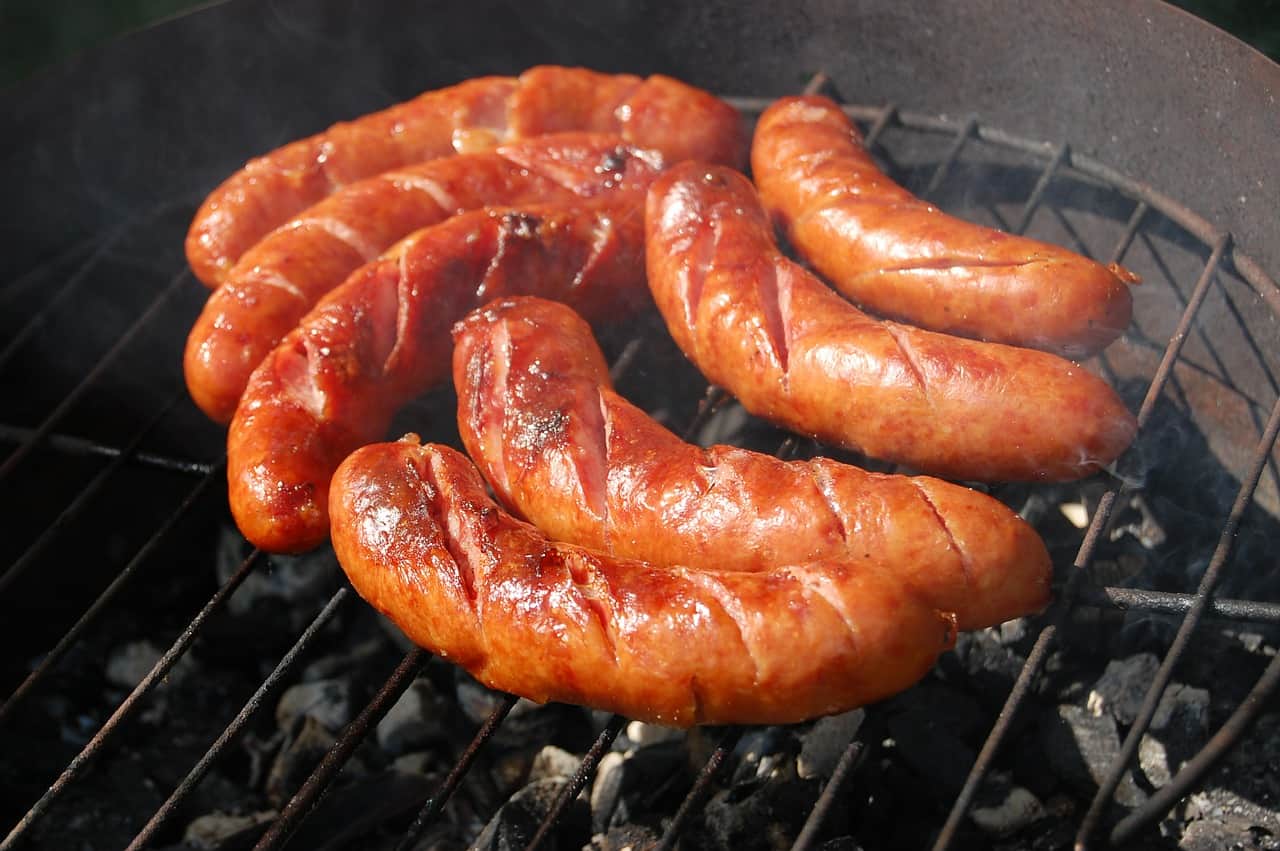
What Does Russian Sausage Taste Like?
Russian sausages are made through a variety of recipes, but a great way to tell what they would taste like is to imagine a smokier, richer, more subtle version of the heavily spiced sausages like Bologna and Salami.
Sausages with blood and red meat in them taste meatier and decadent, while the sausages with added alcohol, milk, cream, and other fillers have a subtle and rich flavor. All these profiles are coated with a smoky and baked flavor, while the boiled versions are softer, rounder, and are rarely sold sliced.
How to Make Russian Sausage
There are countless recipes to make Russian Sausage, but we’re going to talk about the recipe for the more famous kind, the Doctor’s Sausage.
Doctor’s Sausage
The original recipe for the Doctor’s Sausage – back when it was still known for its great taste and good quality – is as follows:
- 5 kg of beef meat
- 70 kg of semi-lean pork meat
- 3 liters of milk
- 2 liters of eggs
- 2 kg of salt and 200 gr of sugar
- 30 gr of cardamom
- 50 gr of ascorbic acid (color stabilizer)
All these ingredients were ground and cooked together, then stuffed in synthetic casings to produce the famous Doctor’s Sausage.
Russian Sausage at Home
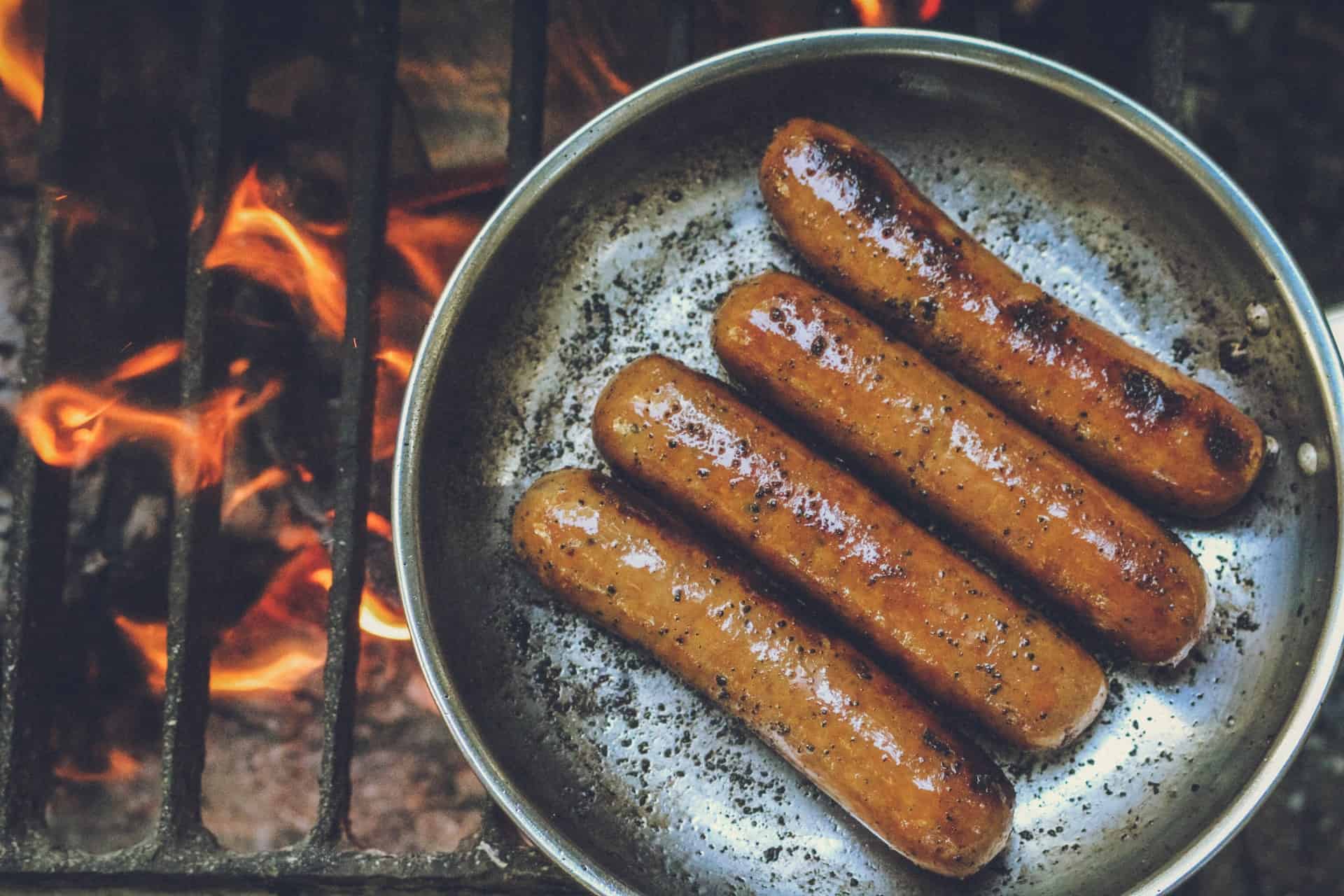
There are countless recipes for how to prepare different types of Russian Sausage at home, but it would take too long to get into them. I’m sharing a recipe here for a modern version of the Russian sausage, which is meant to be served hot and is smoked.
Here are the ingredients you need:
- 1.10lb Lean Pork
- 0.66lb Pork Back Fat
- 0.44lb Beef
- 3tsp. Salt
- 1tsp. Pepper
- 1tsp. Cardamon
- 1tsp. Allspice
- 1/4th cup Brandy or Madeira Wine
- 1/4th cup Cold Water
Grind the meat together and hand-cut the pork fat into small cubes. Mix in all the spices and gradually combine it all with the wine or brandy. Once all the ingredients are combined completely, stuff the raw meat into sausage casings. You can use either synthetic ones or natural sausage casings. Hang them at room temperature for at least 2 hours, and then smoke them until the color of the sausages turns reddish-brown.
This is where you’re supposed to bake the sausages at 167-194º F until the sausages reach an internal temperature of 154-158º F. You can keep checking the sausage temperature with the help of a thermometer.
Once the desired temperature is reached, bathe the sausages in cold water. They’re now ready to store and can be kept in the refrigerator until you’re ready to eat them.
How to Eat Russian Sausage
Russian sausages are either served cold, on sandwiches, or with different vegetables. They’re usually fully cooked sausages that can be safely consumed straight out of their packaging, and most can be stored for a few days before they start to go bad – that was initially the whole point of sausages – food storage!
Russian Sausage Pairing Options and Dishes
In Sandwiches

The most popular way to eat steamed sausages in Russia is to eat them in a sandwich. Russian sandwiches are open, with only one slice of bread. Originally, people preferred to put a thick slice of Kielbasa on buttered bread. Today, people prefer thin slices of Kielbasa on plain toast.
In a Salad
I mentioned before how there were recipes that included Kielbasa added to the Book About Tasty and Healthy Food. Well, this salad recipe is taken straight from there. You need to cut up Kielbasa, boiled potatoes, salad greens, gherkins, celery, and a medium apple in a bowl. Next, you take some mayonnaise, add some vinegar, parsley leaves, and salt in it and dress the salad with this sauce.
The Kielbasa gives the salad that smokey, meaty flavor that it’s missing that goes perfectly with the fresh and fruity textures of the rest of the salad.
Fried and Served with Cabbage
Smoked and boiled Kielbasa can be fried in oil and served with some sauces and chopped cabbage as an aside. This too is a popular way to eat Kielbasa, and one of the recommendations in the cookbook published by the Russian Food Ministry.
Alternatively, you can eat Kielbasa with several other vegetables, and adding fried Kielbasa slices to any salad, or served with any number of vegetables and fruits can be a great option.
With Eggs

There are countless ways you can incorporate Kielbasa in breakfast, some of the simplest beings that you either add to your omelets or eggs.
You can add small bits of Kielbasa to your regular omelet, or you can add thin slices to your fried eggs. Cheese omelets will taste pretty great with Kielbasa added to them, but so would most things. Just put some in a frying pan, and lay some Kielbasa slices flat on the eggs before you flip them over.
As a Bacon Substitute
Almost all kinds of sausages, including the Russian ones, can be used as a substitute for bacon once you fry them. Add a little extra crunch to your meals by cutting up small pieces of Kielbasa and frying them in a pan. If you want, you can even use thin slices.
They’ll taste great with some egg and toast, and you can add those crispy bits into sour cream and eat that with buttered toast or baked potatoes.
On a Charcuterie Board

Meat and cheese spread never go out of style, but they can get boring when you see the same old meat pairings in every one of them. You can mix things up a bit by adding things like Doctor’s sausage and blood sausages to your Charcuterie board, but make sure you’re balancing the flavors right with the appropriate kinds of cheeses and snacks!
Kielbasa Substitutes
If you love Kielbasa but aren’t a fan of the smoky flavor, here are some alternatives for you:
Bologna
The slices Russian sausages that are often added to sandwiches were originally inspired by bologna. Bologna can be the perfect alternative to Kielbasa – especially the sliced kind – in sandwiches and on cold spreads.
Cajun Sausage or Andouille
This sausage is made with heavily smoked meat, usually pork. It originated from either Germany or France, but no one can really nail it down. If you’re a fan of the Kielbasa’s smoky flavor, you’ll definitely like this. Beware though – while Russian sausages aren’t that spicy, the Andouille packs a punch, to say the least.
It can be used in recipes that call for regular Kielbasa for an extra kick or to give them your own personal touch.
Bratwurst
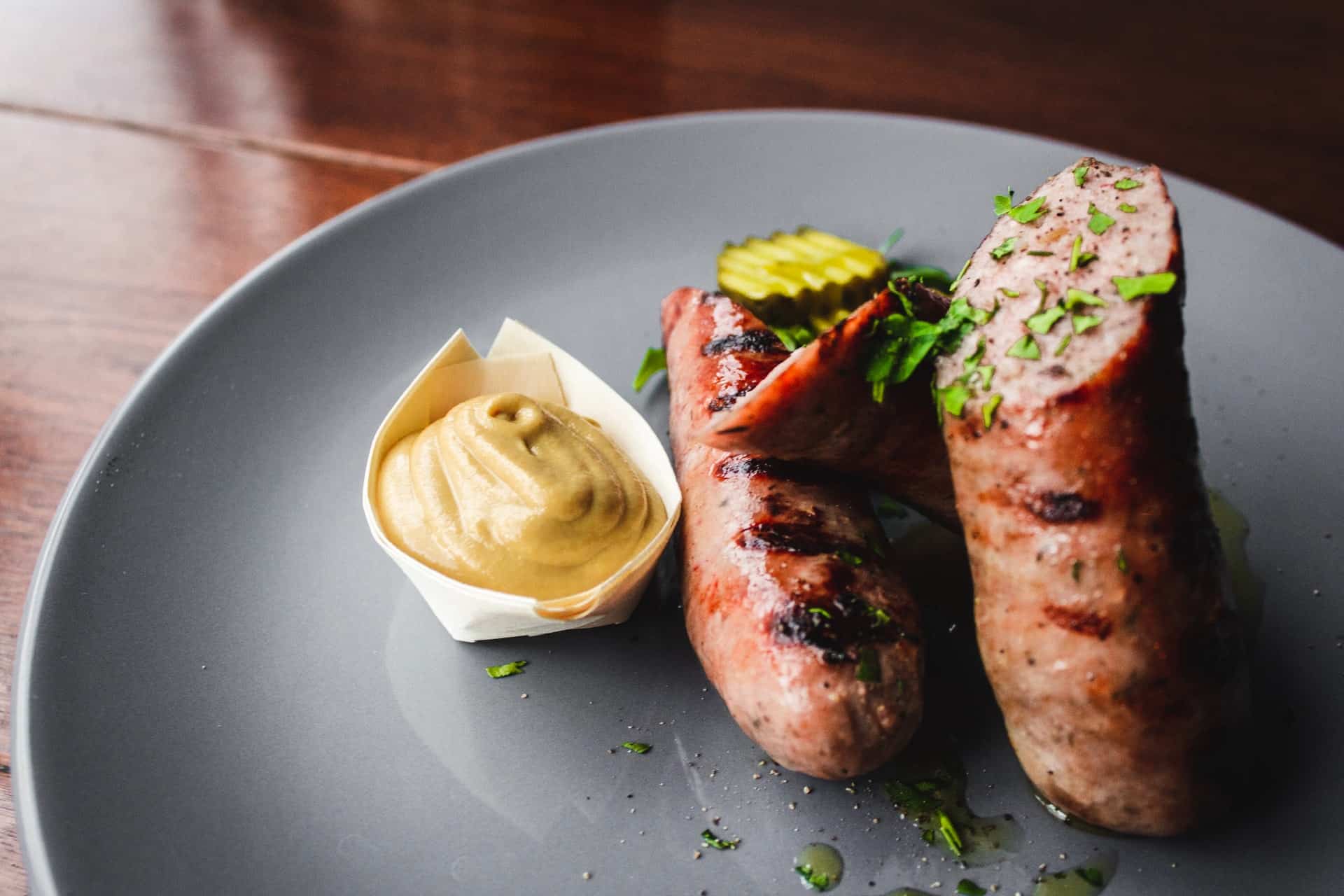
The bratwurst is a german smoked sausage. It will taste more or less like the Kielbasa, but it contains more spices and fewer fillers. Bratwurst contains both beef and pork.
Tofu Sausages
This is a vegetarian alternative to pork sausages, and smoking a tofu sausage with a smoke gun will give you more or less the same flavor profiles as those in Kielbasa. You can make tofu sausages at home pretty easily and see for yourself why sausages are so popular.
FAQs About Russian Sausages
Question: How many kinds of Russian Sausages are there?
Answer: Russian Sausages come in all different kinds. The original recipes were inspired by the American commercial sausage production, but over the years the recipes and types have evolved within Russia. The most popular type of sausage used to be the Doctor’s Sausage, but it fell in popularity when the government decided to adjust the recipe in the 1970s amid food and livestock shortages.
Question: Are Russian Sausages halal or kosher?
Answer: Almost all the recipes for Russian Sausages call for pig’s meat in one form or another, so Russian Sausages are not halal or kosher.
Question: Are Russian Sausages cooked?
Answer: Russian Sausages are almost always cooked. Not only that but most of them are smoked as well. This means that they’re safe to eat as soon as they’re out of the packaging, and can be safely served cold.
Question: Is Kielbasa safe to eat?
Answer: Yes. Kielbasa – when made correctly – is safe to eat even if you don’t cook it further. The sausage is first boiled and then smoked before it’s finished, which fully cooks it.
Question: Are Doctor’s Sausage and Kielbasa the same thing?
Answer: Kielbasa is Russian for “sausage”, and Doctor’s Sausage is just one type of sausage. Let’s put it this way – Doctor’s Sausage is Kielbasa, but not all Kielbasa is Doctor’s Sausage.
Question: Where can I get Russian Sausages from?
Answer: You can make Russian Sausages at home or buy them at the grocery store fairly easily. Any place that stocks different meat cuts and sausage types will have it.
Question: Are Russian Sausages healthy?
Answer: The original recipe for Russian Sausages was meant to provide good quality everyday food to consumers and contained about 99% meat. It was high in nutritional value and rich in taste, but in the 1970s Russia faced severe livestock and meat shortages. Those shortages resulted in the recipe for sausages being changed, and they fell in both quality and taste. Today, all different kinds of Kielbasa are sold, and they all vary in quality. A good indicator of whether Kielbasa is healthy or not is to read the labels on the packaging for how much fat and salt content is in there.
You might be able to find low-fat Kielbasa, but you need to be careful about saturated fat (the kind that’s usually found in meat) intake, and try to avoid it if you’re on a diet or trying to lose weight.
Should I Try Russian Sausages?
If you’re a fan of sausages and want to try something new, I would definitely recommend trying Russian sausages. Unfortunately, many varieties of Russian sausages barely live up to the same standards that they were once held to, which is why it’s important to note the ingredients and the content of any Kielbasa that you buy.

